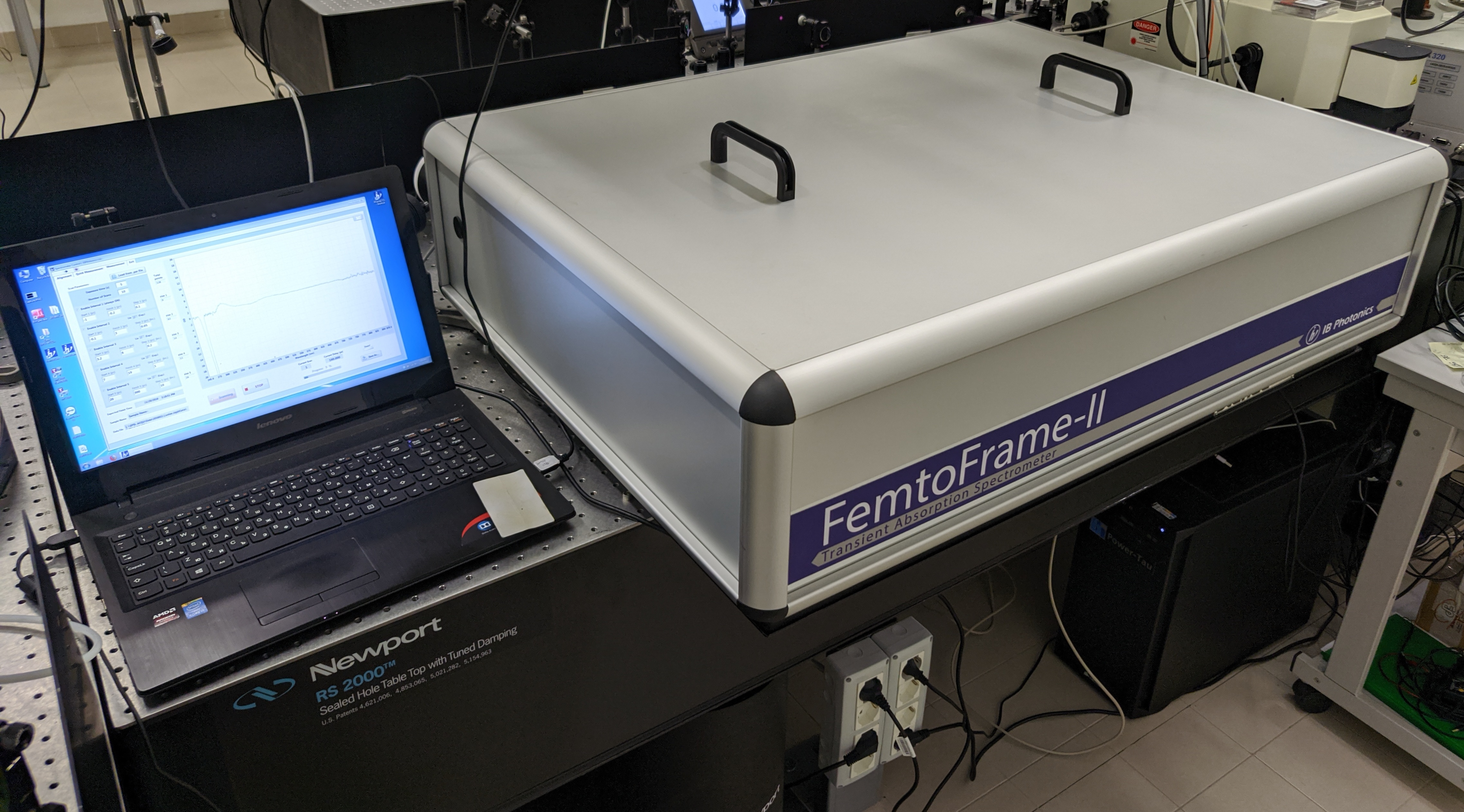
Transient absorbance Spectroscopy
This optical pump-probe technique is extensively used in the laboratory and involves the excitation of the sample using tunable light from the optical parametric amplifier (240 – 20000 nm) and probing with a time delayed white light supercontinuum (240 – 1600 nm). Both the transient absorption and reflectance can recorded as a function of temporal delay of the arrival of the probe with a resoultion of 50 fs.
Photoluminescence
This is a simple but powerful technique for characterising the optical properties of materials. In this case there are two optical set-ups which can be used in the laboratory: i) Excitation at 80 MHz at 800 or 400 nm and analysis of the emitted light with a 0.35 m long monochromator and a charge-coupled device (CCD) or a Si-APD, ii) excitation at 1 kHz (240 – 20000 nm) and measurement of the emitted light using time resolved single photon counting by combination of a monochromator and a photomultiplier. A cryostat and a microscope can be coupled to the first of these to allow low temperature and spatially resolved measurements, respectively.
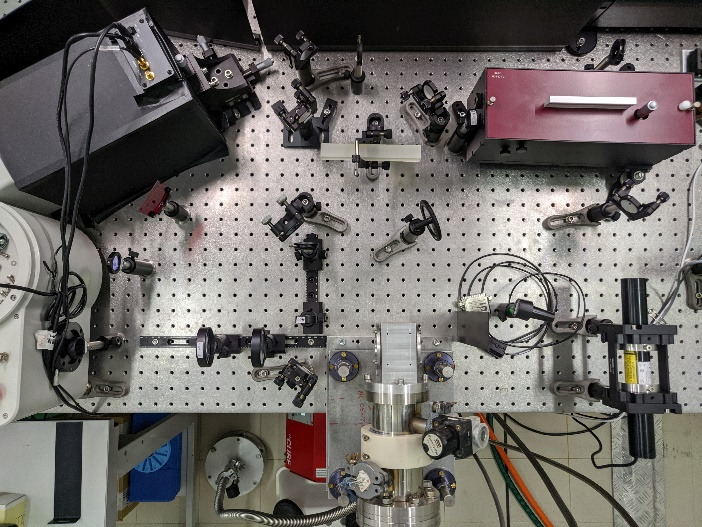
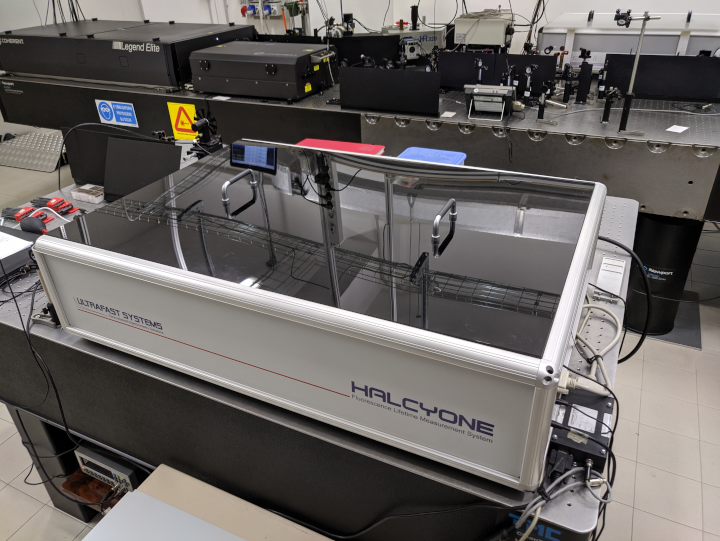
Fluorescence Up-conversion
Up-conversion is similar to the photoluminescence technique but instead of using a photodetector and electronics to measure the delay time of the emitted photo it uses an optical gate. By combining the emitted photon with an 800 nm pulse in a BBO crystal and measuring the up-converted light it is possible to measure the photoluminescence with a temporal resolution of 50 fs.
High Harmonic Generation
The high harmonic generation source under development in the laboratory makes use of strongly non-linear processes in noble gases. When light is focussed to intensities of > 1011 W/cm2 the oscillating electric fields produced are sufficient to generate high harmonics (up to 25th harmonic in Argon) by a three step process involving ionisation, electron acceleration and recombination. In the HHG set-up in this laboratory the light is monochromatised and combined with light from the OPA to performed UV-Vis/EUV pump-probe experiments with resolution of 100 fs.
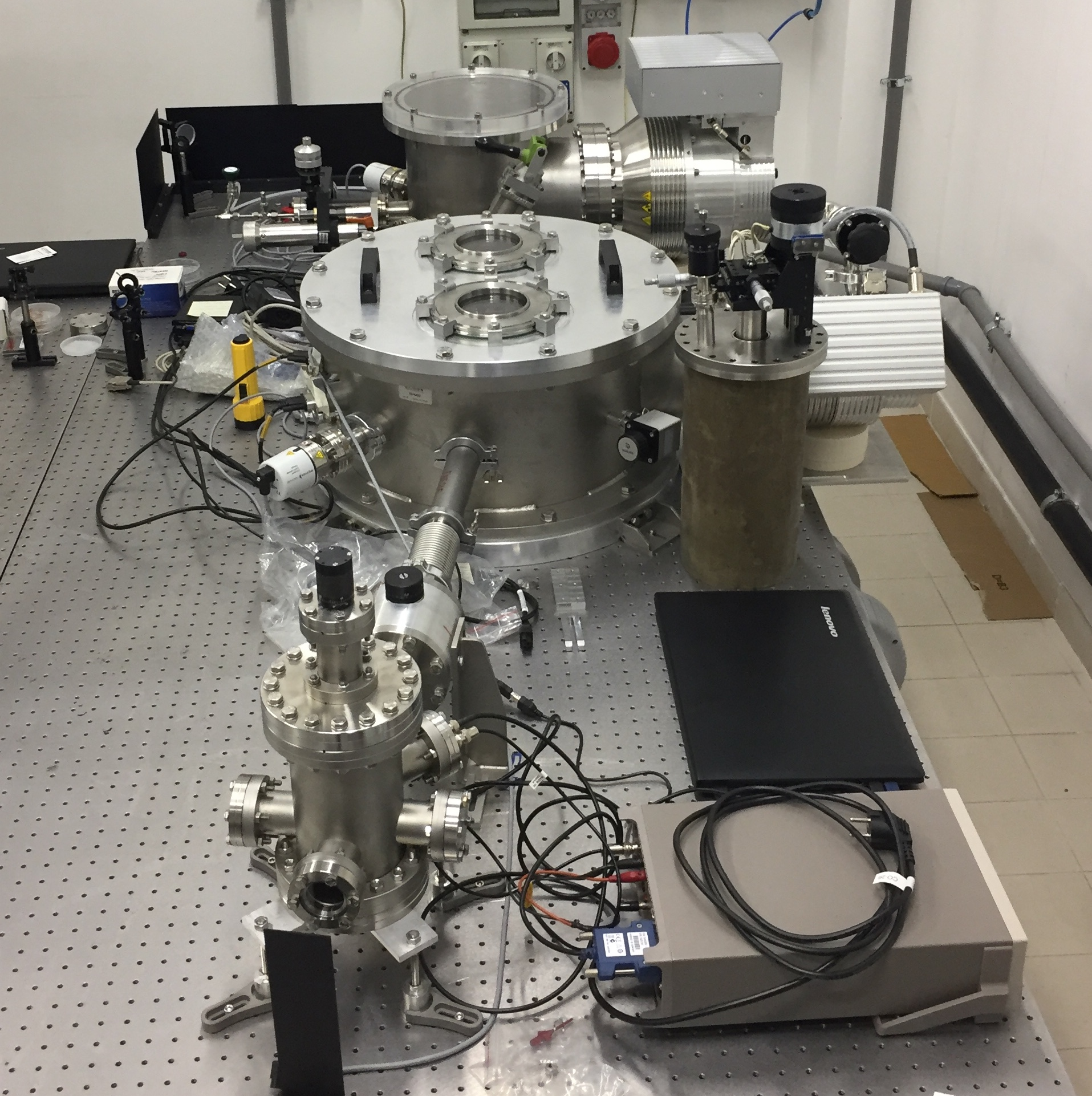
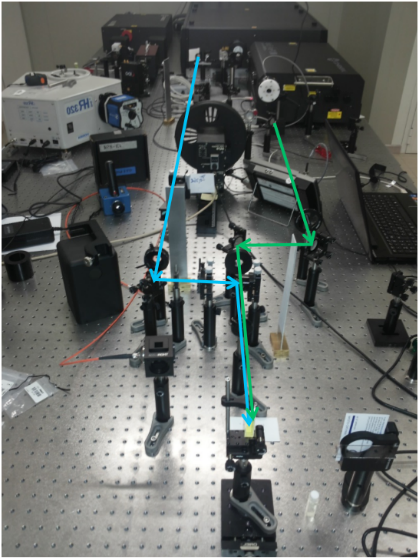
Table Top
In addition to the more complicated optical set-ups used in the laboratory it is possible to perform single wavelength pump-probe experiments. In this case the samples can be excited with 800 or 400 nm light and probed with a single wavelength from the OPA (240 – 20000nm). The pump light is modulated with a chopper and the pump-probe signal is extracted using a lock-in amplifier. This method is complementary to the transient absorption and reflectance measurements with white light as it allows access to a range of probe wavelengths in the NIR/MIR (1600 – 20000 nm) not available in those experiments.






